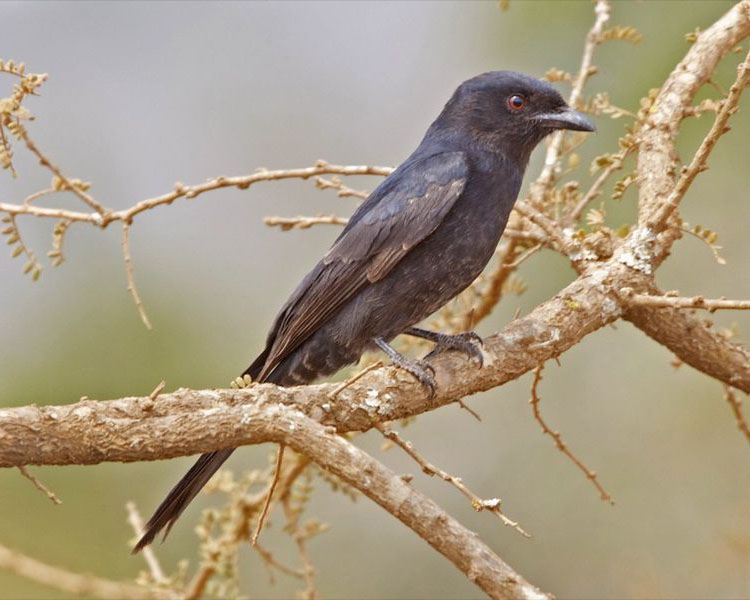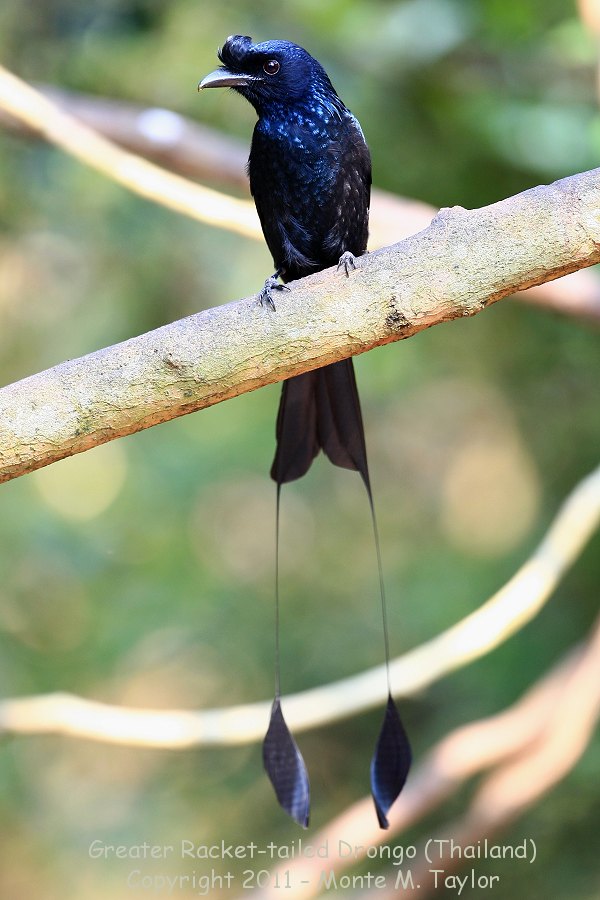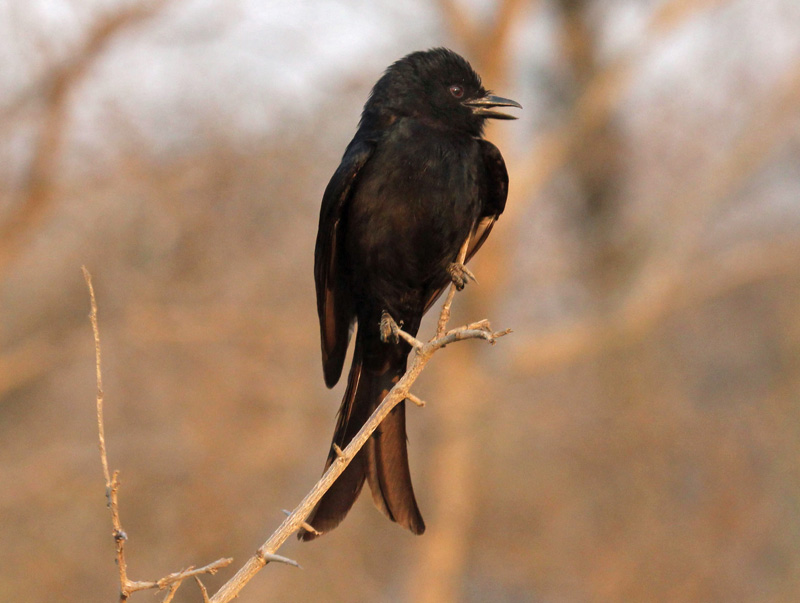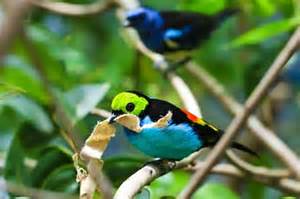
Dicrurus megarhynchus
TAXONOMY
Edolius megarhynchus Quoy and Gaimard, 1830, “Dorйrei” =
Port Praslin, New Ireland. Monotypic member of spangled
drongo (D. bracteatus) superspecies.
OTHER COMMON NAMES
French: Drongo de Nouvelle-Irlande; German: Bandschwanzdrongo;
Spanish: Drogo de Nueva Irlanda.
PHYSICAL CHARACTERISTICS
22–25 in (55–63 cm). Largest of drongos, with strong bill and
enormously elongate, streaming, in-curling outer tail feathers
that are slightly spathulate at the tips. Iris rich red and
plumage all black, with blue gloss on upper surface and wings,
paler blue-glossed spangles on breast, and white tipping on
concealed under-wing coverts; females are smaller and immatures
are duller, near glossless.
DISTRIBUTION
Endemic to New Ireland in Bismarck Archipelago, at all altitudes
from sea-level to 5,900 ft (1,800 m) above sea level.
HABITAT
Mainly interior of mid and upper strata of primary and tall secondary
rainforest.
BEHAVIOR
More retiring than other drongos, but territorial resident yearround
and similarly solitary or in pairs, sitting upright on open
perches within cover, tail dangling. It flares the tail when calling;
calls include a loud, liquid medley of whistles (probably
song) unlike the metallic twanging chatter of other drongos.
FEEDING ECOLOGY AND DIET
Aerial insectivore, sallying actively like other drongos, tail trailing,
taking a range of large arthropods in flight or picked from
the surface of leaves and branches.
REPRODUCTIVE BIOLOGY
Not known.
CONSERVATION STATUS
Not threatened.
SIGNIFICANCE TO HUMANS
None known.
Photo Gallery of - Ribbon-tailed drongo




 Animalia Life
Animalia Life